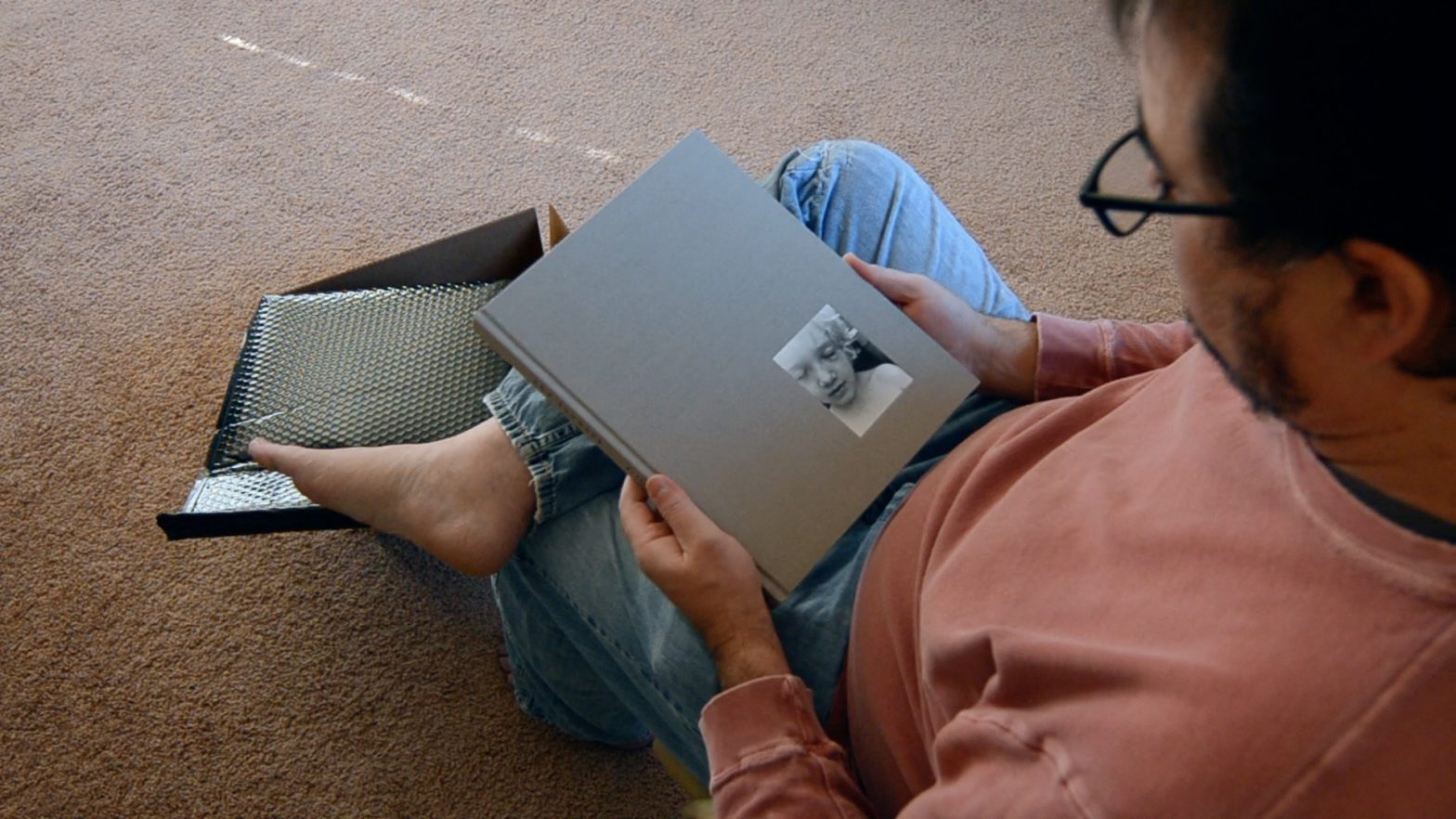Jesse Lenz is the founder and director the wonderful Charcoal Book Club. After a couple of successful years with the club, Charcoal branched out into book publishing with Charcoal Press. The Locusts is Lenz’s first book and it was the Charcoal photobook of the month for… let me count back… November 2020.
The Locusts is a pleasant and tender portrait of Lenz’s children and their rural life in Ohio. There’s tree climbing, and watching bugs, and lounging by the kiddie pool. Thinking back, I had a similar sort of “wild in the weeds” childhood in Smithfield, a North Texas town that no longer exists… literally.* I’d say they look to be having fun, but most expressions are blank or ‘whatchoolookinat’ in the typical manner of portraits over the last 50 or 60 years. I mean… they must be having fun, right? Maybe not hooting and hollering, but still.
I mean… Lenz wasn’t after posed portraits, obviously, and I guess nobody really walks around with a twinkling smile or happily laughing face all the time. I just wonder—and I wonder about this in work from Alec Soth and Todd Hido and others near-heroes of mine too—why nobody ever smiles. I mean… I’m not saying everyone needs to be grinning like an idiot. I read through a corporate software guide recently and every single person in every single picture looked like they were captured mid-laugh: sparkling eyes, dimples, all kinds of teeth. And all so, so, pretty. (And I say this as someone who is, himself oh so pretty.) Photobooks don’t need anything like that, but life—and photos from life—might show people with a wider variety of facial expressions.
Then again, the best picture I have of my half-niece Maggie shows her clearly playing—pink bouncy ball/balloon thing on a string; pink baby stroller—and she has the blankest, whatchoolookinat expression. It’s fabulous. So I guess I get the impulse. And smiles in pictures can seem posed in ways that blank expressions may not. (I say “seem” advisedly, since I’m sure Soth and Hido direct their subjects to not smile.)
Anyway. I don’t know why I went off on all that. Lenz made the book he wanted to make, in the ways he thought he should, with pictures he made and arranged, probably with some guidance—explicit or otherwise—from the great photographers he knows and works with at Charcoal. And The Locusts is a good one. It’s luxurious and extravagant in a way that we’d all love to be for our families. Most of the spreads feature one image; most pictures take up less than 1/4 of the available surface. The paper is thick and smooth and feels great on the fingers, and the printing is beautiful. And the way Lenz mixes portraits of his children with the objects and locations of their play, of their daily lives, works well and really puts me there on the farm with them. Good stuff.
| Concept | |
| Content | |
| Design |
Overall, I rate The Locusts 3.7 stars.
Apologies to Lenz for just going on and on about modern photobook design and content. He made a good one, and kudos to him. I’m fortunate to have a copy: they’re nearly sold out at time of writing. His website is simple and worth a visit, and you can see many of the pictures from The Locusts there. They work perhaps better, or at least differently, on the website (on my laptop) than the book somehow. Backlit and glossy works for many things, for sure.
* It was absorbed by North Richland Hills sometime before I really became conscious of such things, probably about the time the Post Office moved out and the video store took its place, so probably in the early 1980s.
Edit: an earlier draft of this post incorrectly gave the location as rural Montana. This was helpfully corrected by an anonymous reader.

The photographs made shot in Ohio, not Montana